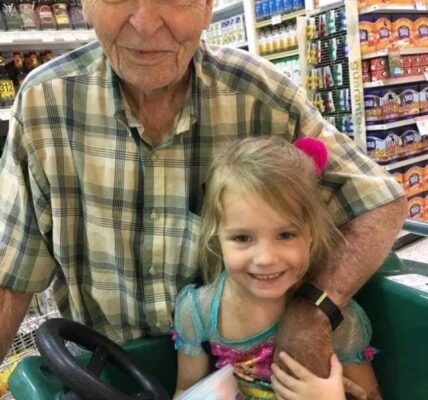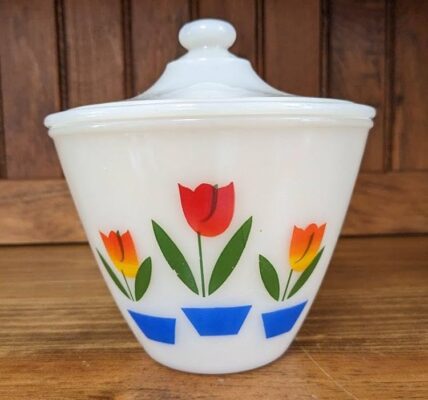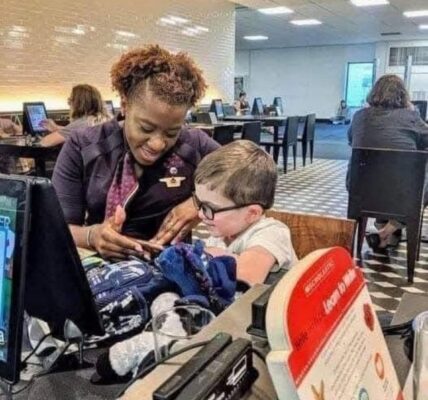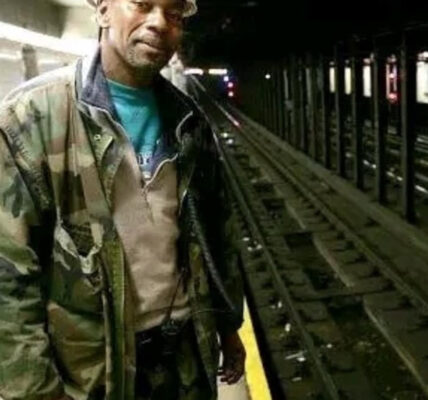On the day she knew the end was near, she called for him.

The soft winter light in Switzerland filtered through the curtains as Hubert de Givenchy stepped quietly into the house where his dearest friend was spending her final days. He had always admired the way she could make any room feel warm simply by standing in it — but now, she was lying still in a bed she had not left for months.
“Audrey,” he whispered, holding her frail hand.
She smiled the same smile that had once lit up movie screens across the world.
“I have a gift for you,” she breathed. “Open this box.”
Inside the tissue paper lay a coat — elegant, simple, unmistakably hers. She lifted it gently, her fingers thin but steady, and placed it in his hands.
“If you ever feel sad, my dear Hubert,” she said softly, “put this on your shoulders and think of me… hugging you to give you comfort.”
He bowed his head.
Because he already knew — he was losing the person he had cherished more than almost anyone else in his life.
And their story, the one that had changed both of them, had begun forty years earlier… with a misunderstanding.
The Day the Unknown Girl Walked In

It was a sweltering summer day in Paris in 1953. At just twenty-six, Hubert had opened his fashion house only a year earlier, still unknown, still searching for the path that would define him.
His secretary’s voice crackled through the intercom:
“Mr. de Givenchy, Miss Hepburn is here to see you.”
His heart skipped.
Katharine Hepburn?
The legendary star of Adam’s Rib? Coming to him?
He straightened his collar, feeling the heat and nerves rising in equal measure.
But when the visitor entered, she was not Katharine Hepburn.
She was a young woman, almost fragile, yet carrying herself with a strange, gentle confidence.
“My name is Audrey — Audrey Hepburn,” she said.
Hubert would later joke that she looked like a “thin stalk of reed,” standing there in silly sandals, a plain white T-shirt, checkered pants, and a gondolier’s hat that sat awkwardly on her head.
But the moment she spoke, something shifted in him.
She explained she needed a designer for a new film called Sabrina, wanting her character to be “dressed with French elegance.” Hubert apologized — he didn’t have time to create a new wardrobe for an unknown actress.
“Then may I choose from your collection?” she asked, eyes shining with hope.
And so she did — walking among his designs, touching fabrics with careful hands, choosing dresses with instinctive grace. He watched her quietly, not yet knowing that his life was changing forever.
A Friendship Stitched in Silk and Trust

Sabrina won an Oscar for costumes — but not for Hubert. His work went uncredited, unnoticed by the Academy.
Audrey flew to Paris to apologize in person.
He smiled and told her the truth:
“Thanks to Sabrina, I have so many new clients I cannot keep up. I became famous, and it is all because of you.”
From that day, she became his muse.
But more than that — she became his family.
Hubert called her “little Audrey.”
She trusted him with her most vulnerable moments.
He dressed her for Funny Face, Love in the Afternoon, and then — the film that would cement her as an icon — Breakfast at Tiffany’s. The “little black dress” he created for her became one of the most famous garments in history.
Audrey later said that playing Holly Golightly was the peak of her career.
Hubert said, “That dress made me immortal.”
But what bound them wasn’t glamour.
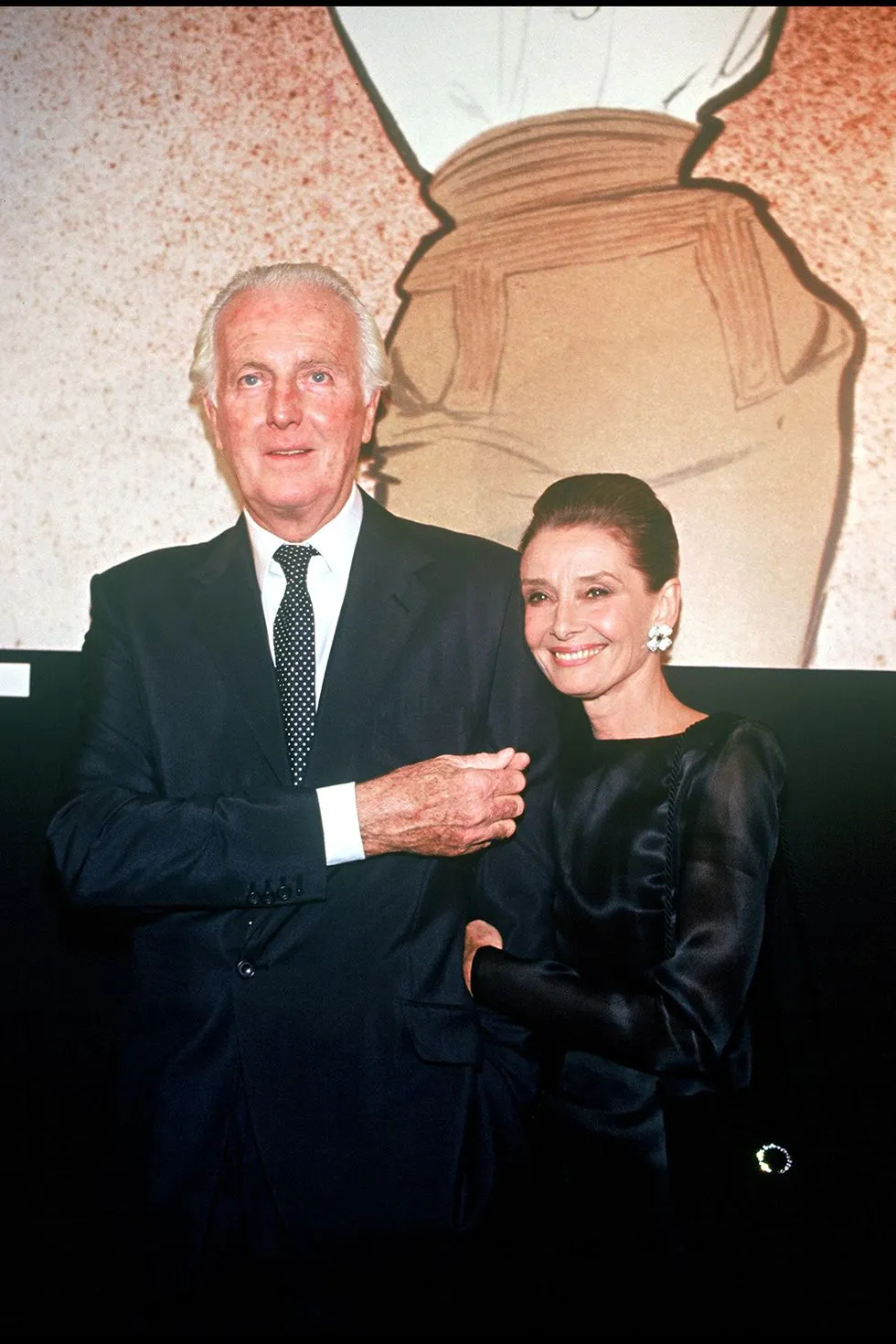
It was the nights when Audrey arrived at his door, mascara streaked after heartbreaks he helped her survive.
It was the quiet moments sitting beside her after she lost her first child in a stillbirth.
It was holding her hand through marriages, separations, and the births of her children.
He designed her wedding suit when she married Mel Ferrer.
And years later, he designed her soft pink suit for her marriage to Andrea Dotti.
They travelled, laughed, argued gently, watched each other grow old, but never grew apart.
Their friendship lasted forty-two years — built not on fame, but on loyalty, gentleness, and a rare kind of devotion.
The Final Gift
Cancer arrived quietly, then cruelly.
Audrey withdrew to her home in Switzerland, surrounded by mountains and stillness. Hubert visited often, caring for her with a tenderness that surprised even him. He brushed her hair. Read to her. Held her hand as she slept.
He cried long before she ever passed — cried in silence, cried out of sight, cried because he could not imagine a world without her.
When she finally spoke the words — “I have a gift for you” — he knew she was preparing him for goodbye.

The coat she gave him was light, soft, delicately stitched. It smelled faintly of her perfume.
“Think of me hugging you,” she told him.
He never wore it in public.
He never displayed it.
He kept it privately, as if the fabric held her heartbeat.
Audrey passed away on January 20, 1993.
At her funeral, Hubert stood still as stone. When people whispered, “Why isn’t he crying?”, he wanted to answer, Because all my tears are already gone.
A few months later, he planted lilies of the valley on her grave — her favorite flower.
Life After the Goodbye
After she died, something inside Hubert dimmed.
He found he could no longer create. Every piece felt empty without the woman who had given his work meaning. In 1995, he retired from fashion altogether, leaving his house to John Galliano.
He retreated to an estate near Paris, tending to gardens instead of gowns. He rarely appeared in public. When people asked him about Audrey, he would pause, smile with a softness that hurt, and say:
“She was an extraordinary woman… and I miss her terribly.”
And when the nights were too quiet, he would take out the coat she had given him, run his hands over the fabric, and feel — for a moment — that she was near.
That she still hugged him.
That she still whispered comfort.
That love, when true, does not die — it simply changes form.
The Love That Outlives the Dress
Their story was never a romance.
It was something rarer.
Two souls who recognized each other instantly.
Two artists who grew together.
Two hearts stitched together in silk, laughter, and trust.
Hubert once said:
“Her beauty was never in the dress. It was always in her soul.”
And perhaps that is why the coat mattered so much — not as fabric, but as a last reminder from a woman who understood him better than the world ever could.
Because in the end, the greatest gift she left wasn’t the coat, or the dresses, or the legacy.
It was the simple truth she showed him:
Some friendships are so profound, they become a form of immortality.
And theirs still is.

